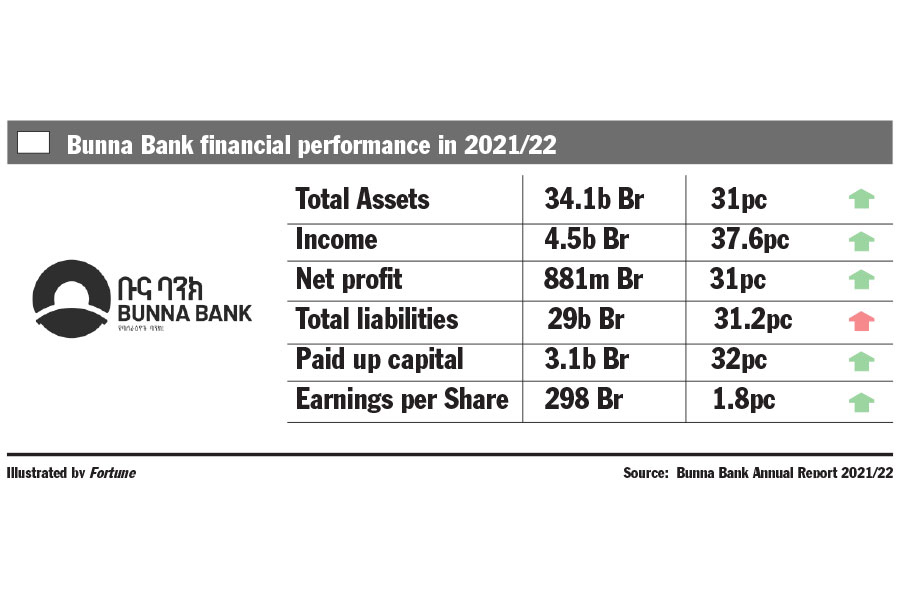
Life Matters | Nov 27,2018
Aug 20 , 2022.
Calling bureaucrats to police industries and discipline their actors could be as good as inviting trouble. The track record of regulators is often contrary to the intention. Regulations follow new industries due to needs and popular demands for protecting innovations, encouraging robust competition and protecting individuals and society from abuse.
The nascent data economy is broadly at a regulatory crossroads. It no longer is restricted to the edge of an experiment; it has many actors serving the main economy, mobilising massive resources, hiring thousands, and competing with each other and those in highly regulated industries. They are, however, operating in a regulatory vacuum.
Take the ride-hailing industry. When it came into the scene, the authorities were characteristically resistant. They saw commuting services moving from the old blue taxi-cabs to younger and niftier hatchbacks. For transport regulators, RIDE (synonym for taxi-hailing companies) was not an opportunity to transform public transport. It was a novelty to be nipped in the bud.
The authorities with the Addis Abeba City Administration Transport Bureau bounced first. Dramatically. They issued the “Electronic Taxi Dispatch Service Control” directive to ban all non-public transport vehicles from providing commercial transport services, insisting that the Bureau should give licenses to all drivers. The Addis Abeba City Administration ceased issuing vehicle plates for commercial purposes, desperate to fend off the “RIDEing” initiative to improve commuting in Addis Abeba.
They faced the commuting public fury that had the test of changes for the better. RIDEing brought value in availability, affordability, reliability, convenience and relative safety. Gladly, the authorities relented. Indeed, kneecapping an emergent technology-based market that tries to improve transportation services in the city made little sense. RIDEing developed a transportation system based on choice without help from the state, as opposed to several other industries into which billions of Birr poured through tax incentives and preferential treatments.
The public transport system is characteristically inefficient and inadequate. The blue taxi fleet, besieged these days, was unavailable in many areas of the city. The fares were unreasonably expensive when it was, and commuters were hostage to their drivers’ whims. Most of the blue taxis are leftovers of a dying era, models by a carmaker from a country rarely brought up for car manufacturing, Russia.
If there were innovation and dynamism recently introduced into the sector by the ride-hailing companies, the Lada taxis would have retired long ago.
The authorities have come around lately, especially as digital transformation, from e-government to digital payment, became central to the economic policies of Prime Minister Abiy Ahmed’s administration. Pioneers and market leaders like RIDE generate hundreds of millions of Birr in tax revenue. They have made the authorities realise the wisdom in giving actors in the emerging digital economy some slack.
Ride-hailing is one of the few markets that have expanded and grown by leaps and bounds over the past few years. This should be acknowledged as remarkable when the economy slowed, and business activities went to a crawl. Over 40 ride-hailing companies have transport platforms, with RIDE and Feres carving the biggest pie in the market. These platforms facilitate an estimated 90,000 trips, according to a report by USAID and Cepheus Research & Analytics.
At least one, Little Cab, is a foreign venture. There is also customer segmentation, as in the case of Seregela, which is female-focused, as bobbled as it remains.
However, for a nascent industry that still serves a nitch market, generating an estimated 4.6 billion Birr in turnover is an impressive feat for the RIDEing industry. There hardly was an industry that has made its mark in so short a period since ZAYRIDE came into the scene in 2016. It thrived with no policy support and had been devoid of bureaucratic oversight.
The RIDEing economy remains a tiny but growing slice of the digital sector, which financial services companies dominate. Within three years, the industry is estimated to have a market size of 15.5 billion Br and major players are expected to be well worth over a billion Birr.
The future should be promising. But it demands that policymakers provide a conducive and permissive regulatory environment that protects the public and service providers. There is a justification for regulatory oversight to ensure healthy competition with and among other industries which find the level playing field skewed against their favour.
At the moment, oversight is barely in place. Only half of the companies are registered by the Addis Abeba Transport Bureau. There is hardly a legal framework for the industry. This is irregular in a country where the authorities are known for over-regulating and policing the private sector.
The instinct to want to see it remains this way is understandable. It is rarely ideal when a government locks eyes on any industry. Usually, it happens when the authorities feel an urgency to raise tax revenues. Attempts were distinctly adverse when the authorities attempted to get involved in RIDEing. The episode of banning vehicles with Code-3 license plates was neither encouraging for the industry, good for the state, useful to the companies, nor beneficial to the public.
It does not mean that any level of regulation is unimportant, though. It is crucial to protect consumers and the industry. It should start from a conceptual framework that settles whether ride-hailing companies should be considered transport or technology companies. Experimenting with the regulatory exercises of these companies could lead to a better understanding of the digital and virtual economies that are becoming dominant in everyday life.
Where is the dividing line? If merely technology companies, how about when they are importing vehicles for transportation purposes on behalf of drivers? What of the drivers themselves? Should they be considered employees and be allowed to exercise labour rights? Are they contractors, independent workers paying commissions to ride-hailing platforms to facilitate business with customers? Who should determine the commission percentages and the fares commuters pay? Who should set standards for drivers’ competence and vehicle safety?
RIDEing has a long way to go in addressing these issues and a great deal more value to create. The market in towns outside Addis Abeba is barely touched, and an innovative system to disrupt mini-bus taxis is yet to arrive. Cargo and food delivery is untamed, despite the efforts of a few. A lack of oversight and a regulatory framework must not bulldoze the industry just as it is budding.
Whether RIDEing or several other companies in the sharing economy, they will emerge to be mammoth with so much data on citizens. How and to what purpose they use these data should be a source of worry for policymakers and society. They are bound to be misused and abused without a robust regulatory environment. They can choose paths in compelling industries to organise to establish self-regulatory instruments and focus on checking these to function properly.
It is encouraging to see the ride-hailing companies coming together to form an association. So should drivers and user pressure groups too.
Another option is for Parliament to consider establishing a standalone federal regulatory agency mandated to oversee the digital and virtual economies. They will hold technology companies accountable, foster innovations, protect citizens and encourage healthy competition. That is yet to come and will be a different ballgame governing a different society.
PUBLISHED ON
Aug 20,2022 [ VOL
23 , NO
1164]

Life Matters | Nov 27,2018

Fortune News | May 20,2023

Radar | Dec 04,2021

Radar | Sep 24,2022

Life Matters | Aug 21,2021

Agenda | Feb 19,2022

Agenda | Jun 07,2022

Featured | Nov 23,2019

Advertorials | Mar 13,2019

Fortune News | Apr 20,2024

Photo Gallery | 180946 Views | May 06,2019

Photo Gallery | 171138 Views | Apr 26,2019

Photo Gallery | 162279 Views | Oct 06,2021

My Opinion | 137337 Views | Aug 14,2021

Dec 22 , 2024 . By TIZITA SHEWAFERAW
Charged with transforming colossal state-owned enterprises into modern and competitiv...

Aug 18 , 2024 . By AKSAH ITALO
Although predictable Yonas Zerihun's job in the ride-hailing service is not immune to...

Jul 28 , 2024 . By TIZITA SHEWAFERAW
Unhabitual, perhaps too many, Samuel Gebreyohannes, 38, used to occasionally enjoy a couple of beers at breakfast. However, he recently swit...

Jul 13 , 2024 . By AKSAH ITALO
Investors who rely on tractors, trucks, and field vehicles for commuting, transporting commodities, and f...

Nov 2 , 2025
The National Bank of Ethiopia (NBE) has scrapped the credit-growth ceiling that had s...

Nov 2 , 2025 . By SURAFEL MULUGETA
The burgeoning data mining industry is struggling with mounting concerns following th...

Nov 2 , 2025 . By YITBAREK GETACHEW
Berhan Bank has chosen a different route in its pursuit of a new headquarters, opting for a transitional building instea...

Nov 2 , 2025 . By BEZAWIT HULUAGER
Nib International Bank S.C. has found itself at the epicentre of a severe governance...